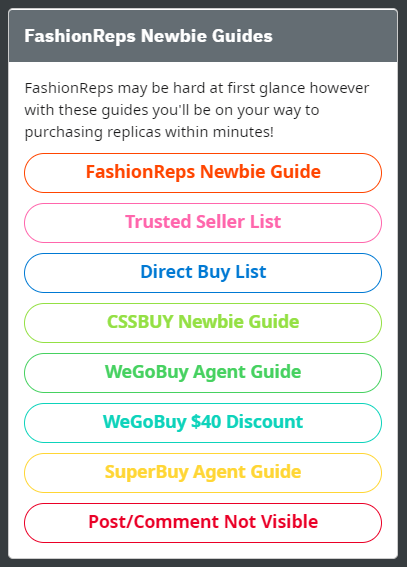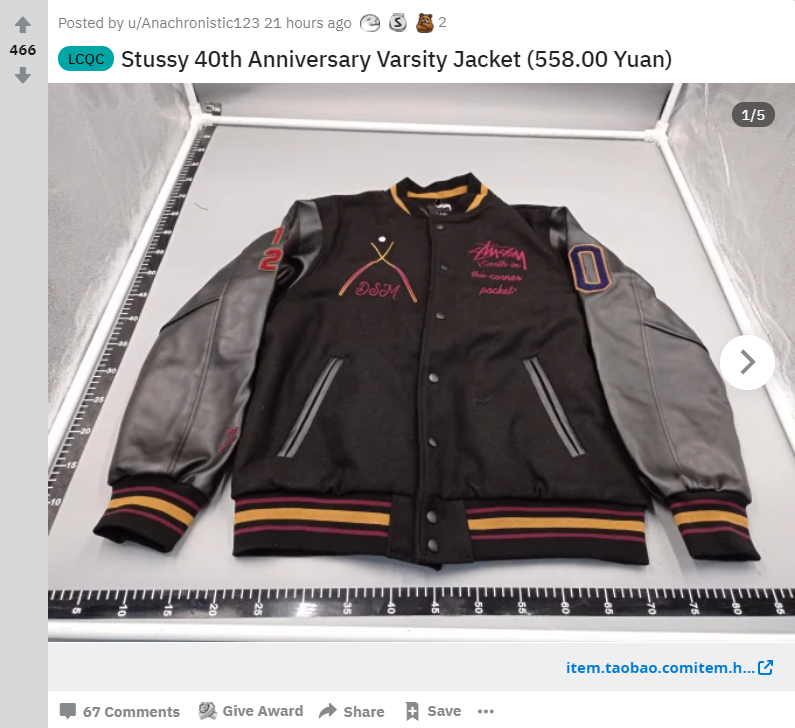A Perspective from Singapore: The Rise of Digital Counterfeit Culture
FashionReps, RepLadies, Repsneakers and more
In early 2017, while searching for reviews on a pair of white sneakers from European brand Common Projects online, I stumbled upon a peculiar corner in social-networking site Reddit. Within the discussion thread, numerous users were discussing and scrutinising the accuracy of the counterfeit version of the minimalist white sneakers. This group of users forms FashionReps, a community in Reddit that discusses, reviews and shares information regarding counterfeit fashion products ranging from clothing, bags, sneakers and shoes from brands such as Louis Vuitton, Balenciaga, Off-White and Nike.
Since my first glimpse into this realm of counterfeit products, a cursory search on Reddit led me to other similarly-named discussion groups such as RepLadies, a community dedicated to discussing counterfeit luxury handbags, as well as RepSneakers, a community dedicated to discussing counterfeit sneakers. In these communities, there are numerous user-created guides for new members that simplify the process of purchasing counterfeit products. Since 2017, these communities have only grown bigger In FashionReps, the number of members grew from 32.4K members in the beginning of 2017 to 425.5K members in January 2021, a meteoric 720% increase over a four-year period. The substantial growth of these discussion boards is in tandem with the soaring volume of counterfeit products traded around the world. An estimate of more than half a trillion dollars worth of fake fashion products are traded every year, accounting for more than 60% of all counterfeit products traded globally.
User-created guides that simplify the counterfeit-buying process. Screenshot taken by the writer from the FashionReps subreddit.
Quality-Control image sent by agents in China to gather feedback from the community. These third party agents also facilitate the return of products with major flaws. Screenshot from Reddit user Anachronistic123.
The growing reach of the Internet and social media platforms has facilitated the world’s accessibility to global information, and this has amplified the proliferation of these online counterfeit communities, where people with niche interests can congregate and communicate virtually from anywhere around the world. A quick survey of the demographic of these thriving communities shows that while the majority of the users are from the United States, the remaining users come from many different countries around the world such as Mexico, Japan, Indonesia, Thailand and Singapore. These users are able to come together to discuss and share the process of purchasing counterfeit products, review different sellers’ products and customer service, as well as to share guides on how to locate, contact and purchase from these sellers. The growth of these user-generated content promotes a sense of trust within new and existing users and this, in turn, further perpetuates the growth and accessibility of these counterfeit products.
The Internet’s veil of anonymity too, plays an important part in providing a sense of security and convenience for online users looking to purchase these counterfeit products. In the past, counterfeit products tend to be of low quality and are usually purchased from local street hawkers in person. This physical experience could be an embarrassing and stressful experience that deters people from buying counterfeit products. Today, with a simple click, consumers can chat with different sellers and look through online catalogues of counterfeit products on Chinese e-commerce platforms such as Taobao, DHGate and Aliexpress at their own leisure. The products will then be shipped directly to their door in a few days without the consumer taking a step out of their homes.
In recent years, these platforms have made efforts towards clamping down on stores that facilitate the sale of counterfeit products on these websites. In response, some sellers have started to pivot towards showcasing their products on their own websites or photo platforms such as Swezgo - Wechat’s mini-website for categorising and sharing photos - and Yupoo. These sellers usually communicate with potential customers through WeChat or Whatsapp, and payments are made through online payment services such as Transferwise, Western Union or Payal. Some sellers do continue to offer payment through Taobao as customers feel more secure with the platform’s escrow arrangement and in order to avoid detection, dummy images are usually used in the product listing.
Swezgo website of counterfeit seller Aadi with counterfeit Loewe Flamenco bags. Image taken from Aadi.
The seller sends photos of the product to the customer after payment is made, before the seller ships out the product. Images taken from the seller's Swezgo page.
One of the counterfeit sellers on Swezgo brought in a Taobao website with dummy listings for payment. Screenshot taken by the writer.
For consumers who cannot read Chinese, third-party agents such as CSSBuy, Super Buy and We Go Buy make it easy for customers to purchase these counterfeit products from Taobao and Weidian. These third-party agents play an important role as middle-men. They help to communicate with the sellers, consolidate orders, check the quality of the products received and arrange for shipping and returns. Some agents have even joined these online forums to promote their services within the community. They often step in to solve any issues raised in the forums, making the experience of purchasing counterfeit products less daunting and more accessible and user-friendly.
This new generation of young consumers grew up in a world where the lines of morality and legality of copyright infringement and counterfeiting are increasingly blurred. The advent of the Internet has facilitated the illegal and widespread download of pirated movies, music or software, and this emergence of copyright piracy was similarly accompanied by a growing number of fast fashion brands. Brands such as Forever 21, Zara and H&M built their business selling designs largely copied from fashion brands and independent designers, and sold at a much lower price point. Through this lens, it is possible to understand how this group of young consumers, weaned on a regular diet of free pirated multimedia content and low-priced designer knockoffs, could perhaps develop the notion that counterfeiting is a form of harmless, bargain hunting not entirely dissimilar to the experience of buying a designer knock-off bag from Zara. “Replica luxury brands is like going to Forever 21,” as one user posted. “You can [scratch the] itch of the shopaholic urge and get so much more mileage for your dollar”.
In 2016, independent Los-Angeles illustrator Tuesday Bassen uploaded a post on Instagram accusing Spanish fast-fashion retailer Zara of stealing her designs. Image taken from Dazed Digital.
The lack of legal repercussions could also be a reason for the increasing popularity of fashion counterfeits. In Singapore, for example, it is not illegal to buy counterfeits for personal use. Any existing laws on counterfeits apply largely only to counterfeit sellers, not the buyers. The only risk for the counterfeit buyers is custom seizures of their products. There are often cases where personal shipments of counterfeit products are seized by the custom authorities with no recourse for these consumers. However, with the growth in e-commerce comes an upsurge in the volume of shipments passing through customs, and it will only be an uphill battle for the authorities to screen every package in order to inhibit the growing number of counterfeit shipments.
With the rising popularity and growth of counterfeits, how big of a threat will this pose to legitimate products? It is difficult to fully untangle this sticky relationship between the two. Some would argue that due to the price difference between counterfeits and authentic products, counterfeits target a different group of consumers who are not willing or unable to pay for the genuine product, and hence there is little direct economic loss incurred by these fashion brands. Yet, we cannot ignore the indirect impact of counterfeits. Luxury fashion houses and streetwear brands such as Supreme tend to limit the supply of their products in order to inflate the demand, desirability and prices for these goods. The rise of counterfeits could dilute the brand’s hegemony over their product’s perceived exclusivity. If the value of these expensive, luxury products are derived from this exclusivity, few would choose to buy these very bags that everyone on the street is carrying.








